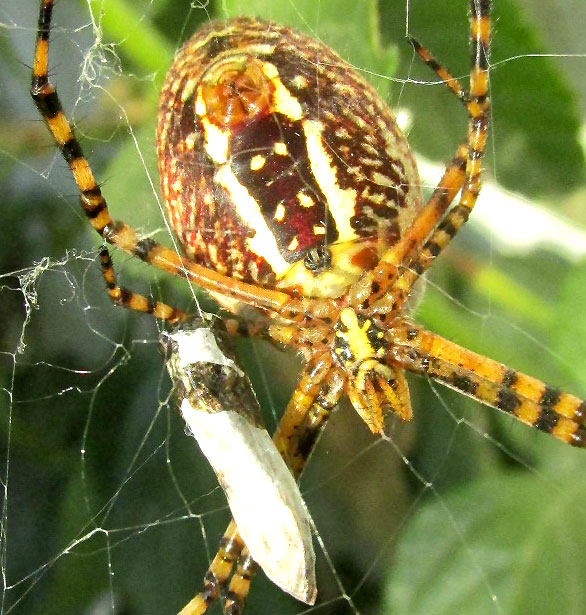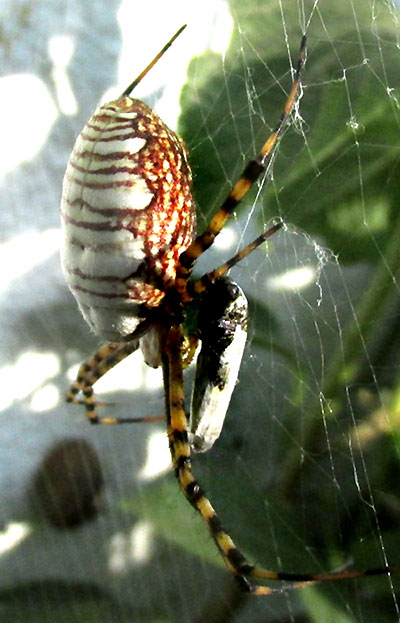Excerpts from Jim Conrad's
Naturalist Newsletter
entry dated December 16, 2022, issued from near Tequisquiapan, elevation about 1,900m (6200 ft), ~N20.57°, ~ W99.89°, Querétaro state, MÉXICO
BANDED ARGIOPE

At the center of a web spanning a small open space between lantana bushes growing along a wall surrounding a courtyard behind a house in a small village, amid all the greenness and shadiness, the above spider produced a vivid splash of color. It was a big one, just the body about 20mm long (0.8 inch). From its habitat, size, shape, the yellow-and-black banding of the legs, its web and its most recent prey neatly cocooned in silk, I felt sure it was an argiope species, genus Argiope, pronounced "AAR-gee-owp," and generally known as garden spiders. However, it was neither the common garden spider species I grew up with in the eastern US, Argiope aurantia, nor the garden spider we saw so frequently in the Yucatan, the Silver Garden Spider, Argiope argentata.

At the right you see the upper, or dorsal, surface of this spider's abdomen, and the white speckles along the abdomen's sides. The mostly hidden cephalothorax at the abdomen's bottom, the spider's fused head and thorax, is white, as on the two species mentioned above.
Argiopes are favored photography subjects all across the globe, so the Internet has plenty of pictures of them. However, I couldn't find a single image of them showing abdomen colors and patterns just like ours, though a few came close, such as one at the InsectIdentification.org website, taken by Sandra S. in Ft. Collins, Colorado, identified as the Banded Argiope, ARGIOPE TRIFASCIATA.
Other Internet pictures of Argiope trifasciata showed spiders with abdomens colored and patterned very different both from ours and one another. Most showed abdomens with more numerous and narrower crossbands than ours, and more often the decorations appeared on a black background instead of our spider's rusty-brown one. Patterns on the underside, the ventral surface, were more similar to our spider's, but also more likely to appear on a black background. I wonder if the similarity of our spider with the Argiope trifasciata in Colorado could result from our similar elevations -- 1525m for Ft. Collins, 1,900m for us?
Whatever the case, Banded Argiopes are native to North and South American, but now dispersed around the world. Their behavior is similar to other argiopes we've met, active during the day, wrapping silk around prey snared in the web to immobilize them, then injecting the victim with toxic saliva, and feeding on them at their convenience.